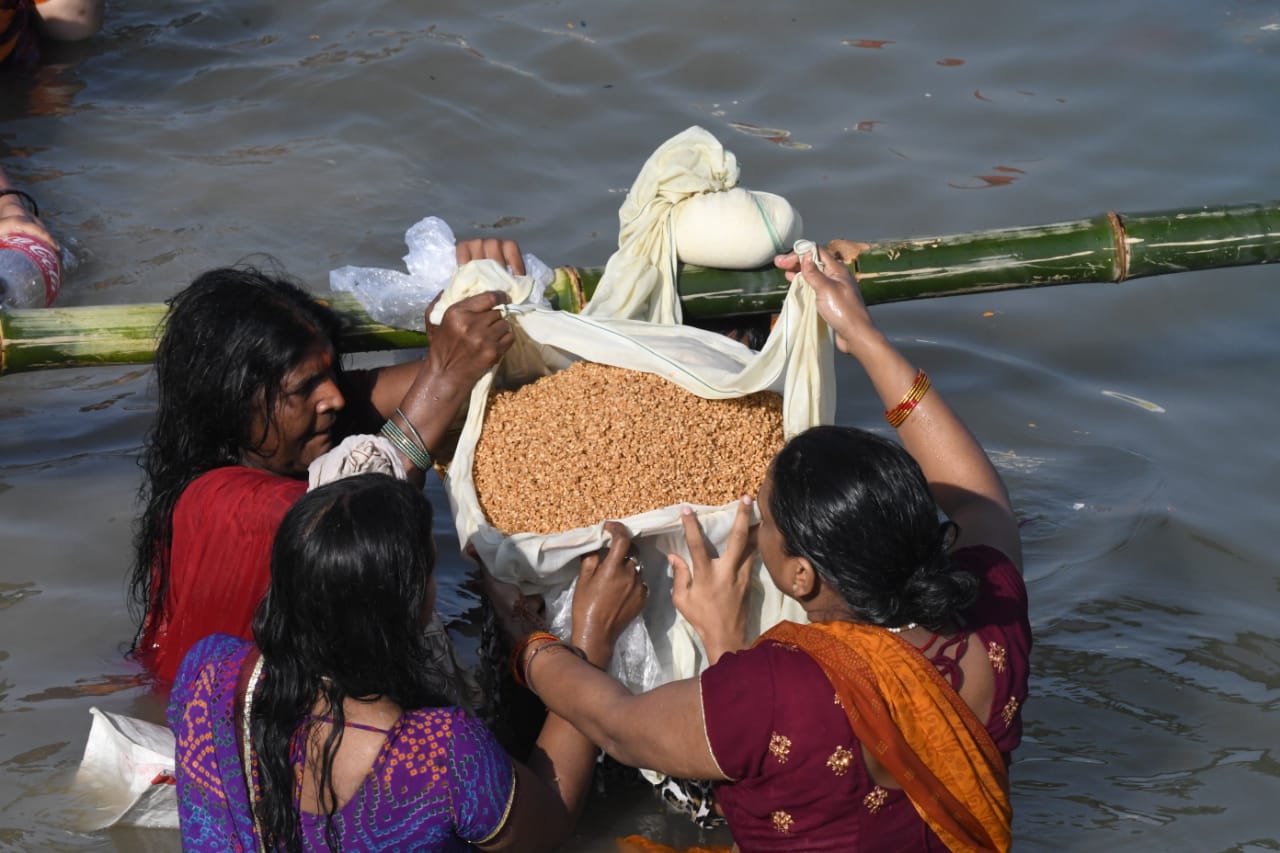Chhath Puja: Bihar’s Mega Festival Illuminates Global Diaspora with Environmental Harmony

Dr. Ashok Ghosh
 Bihar and the global Bihari community are immersed in the grandeur of Chhath Puja, a cultural spectacle earning the title of a “Mahaparv” or mega festival. Beyond religious confines, Chhath Puja is a unique celebration, fostering unity among communities through a shared reverence for nature.
Bihar and the global Bihari community are immersed in the grandeur of Chhath Puja, a cultural spectacle earning the title of a “Mahaparv” or mega festival. Beyond religious confines, Chhath Puja is a unique celebration, fostering unity among communities through a shared reverence for nature.
Distinctively, Chhath Puja stands out as an environmentally friendly festival, sending a powerful message of environmental conservation from Bihar to the world grappling with climate change. Beyond the boundaries of the state, this four-day festival has found a global stage, celebrated by Biharis not only across India but also in countries like Nepal, Mauritius, the UK, and the USA, reflecting the festival’s resonance among the Bihari diaspora worldwide.
At the heart of Chhath Puja is the worship of the Sun God, a deity not only steeped in mythology but also a tangible and vital force in sustaining life on Earth. Legend has it that Chhath Puja traces its origins to the early Vedic period, where worshippers chanted Mantras from the Rig Veda. The festival also finds connections to the Mahabharata era, with the belief that Karna, the son of the Sun God and the King of Anga Desha, regularly observed Chhath Puja.
In Hinduism, where numerous gods and goddesses are venerated, Sun God (Suryadeo) stands as a unique entity—the only deity visible and tangible, providing the life-sustaining energy essential for all living organisms. The Sun’s role as the ultimate source of energy, driving photosynthesis and sustaining the entire ecosystem, underscores its unparalleled significance.

Chhath Puja unfolds over four challenging yet spiritually profound days, marked by soulful purity. The ritual begins with Nahay Khai, involving a sacred river or pond bath in the afternoon, accompanied by a single Satvik meal. Kharna follows, with worshippers consuming a single meal after sunset. The subsequent 36-hour fast without food or water leads to the third day, where offerings are made to Chhathi Maiya just before sunset. The culmination on the fourth day witnesses offerings to Chhathi Maiya in the presence of the rising sun.
Beyond its religious connotations, Chhath Puja encapsulates a celebration of the interconnectedness between humans and the environment. The ritual of standing waist-deep in water during the ceremonies serves as a poignant reminder of the imperative to preserve and protect our water bodies.
A distinctive aspect of Chhath Puja lies in its eco-conscious practices. All offerings used are biodegradable, and the new crops grown by farmers are presented as a gesture of gratitude. Unlike other festivals, Chhath Puja requires no priest; instead, family members and the community collectively contribute to the rituals. The festival fosters inclusivity, transcending class and caste, with everyone sharing the same platform to offer Puja and assist one another.

Chhath Puja is a beacon of community participation in “Sampoorna Swachatha Abhiyan” (Total Cleanliness Campaign). Streets and riverbanks throughout Bihar undergo collective cleaning, maintenance, and refurbishment, transforming the Ghats along the Ganga overnight through government and community efforts.
As the sun sets on the Chhath Puja celebrations, it leaves behind not just the glow of faith but a profound message of environmental stewardship. Amidst rituals and fervent prayers, the festival stands tall as a testament to the harmonious coexistence of spiritual devotion and environmental consciousness, echoing Bihar’s unique contribution to the global cultural tapestry.
(The Author is Head of Research Department at Mahavir Cancer Institute and Research Center, Patna and Former Chairman of Bihar State Pollution Control Board)





